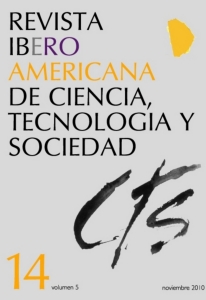Life, Technology, and Nature in the Thought of Gilbert Simondon
DOI:
https://doi.org/10.52712/issn.1850-0013-844Keywords:
Simondon, philosophy of technology, biophilosophyAbstract
This work examines the relation between the natural and the artificial, and between living and technics, in the philosophy of Gilbert Simondon. One of the attractions of Simondon’s thought is that he attempts to think technology from the perspective of a general theory of the living and of the human qua living. Nevertheless, there are certain problems that the Simondonian perspective cannot effectively engage with, such as the techno-genesis of the human and the problem of biotechnics. This article aims at analyzing the philosophy of technology from the point of view of individuation. All those scholars who have commented on Simondon’s philosophy of technology have concentrated exclusively on The Mode of Existence of Technical Objects. Nevertheless, this article will show that the Simondonian philosophy of artefacts must be read in the context of his philosophy of the living. This means that The Mode of Existence of Technical Objects must be examined in conjunction with his magnum opus, Individuation in the Light of the Notions of Form and of Information, like a continuous argument. In this manner, certain problems emerge: in particular, a certain framework that approaches the problem of concepts like “human”, “living” and “technology” from the perspective of already constituted individuals.
Downloads
References
AMBROSE, S. (2001): “Paleolithic technology and human evolution”, Science, vol. 291, nº 5509, pp. 1748-1753.
ARTHUR, W. B. (2009): The nature of technology: What it is and how it evolves, The Free Press.
CANGUILHEM, Georges (1994): A vital rationalist, New York, Zone Books.
CORBALLIS, M. (1999): “The gestural origins of language”, American Scientist, vol. 87, pp. 138-145.
DUDEN, B. (1993): Disembodying women: Perspectives on pregnancy and the unborn, Harvard University Press.
JONAS, H. (1970): “Spinoza and the Theory of Organism”, en S. F. Spicker (ed.): The philosophy of the body: Rejections of Cartesian dualism, Chicago, Quadrangle Books.
NELSON, R. R. (2007): “Universal Darwinism and evolutionary social science”, Biology and Philosophy, nº 22, pp. 73-94.
PEARSON, K. A. (1999): Germinal Life: The difference and repetition of Deleuze, London, Routledge. 165
SIMONDON, G. (2008): El modo de existencia de los objetos técnicos, Buenos Aires, Prometeo.
SIMONDON, G. (2009): La individuación a la luz de las nociones de forma e información, Buenos Aires, Ediciones la Cebra y Editorial Cactus.
STIEGLER, B. (1998): Technics and Time 1: The fault of Epimetheus, Stanford University Press.
STIEGLER, B. (2004): La técnica y el tiempo 3: El tiempo del cine y la cuestión del malestar, Hondarribia, Editorial Hiru.
STIEGLER, B. (2009): Techniques and time 2: Disorientation, Stanford University Press.
VACCARI, A. (2009): “Unweaving the program: Stiegler and the hegemony of technics”, Transformations, nº 17,
WOLPERT, L. (2003): “Causal belief and the origins of technology”, Philosophical Transactions of the Royal Society of London A, nº 361, pp. 1709-1719.
Downloads
Published
How to Cite
Issue
Section
License
Copyright (c) 2025 CC Attribution 4.0

This work is licensed under a Creative Commons Attribution 4.0 International License.
All CTS's issues and academic articles are under a CC-BY license.
Since 2007, CTS has provided open and free access to all its contents, including the complete archive of its quarterly edition and the different products presented in its electronic platform. This decision is based on the belief that offering free access to published materials helps to build a greater and better exchange of knowledge.
In turn, for the quarterly edition, CTS allows institutional and thematic repositories, as well as personal web pages, to self-archive articles in their post-print or editorial version, immediately after the publication of the final version of each issue and under the condition that a link to the original source will be incorporated into the self-archive.











